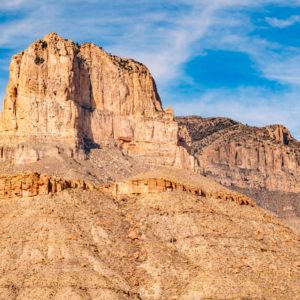Beginnings of the Modern Environmental Movement
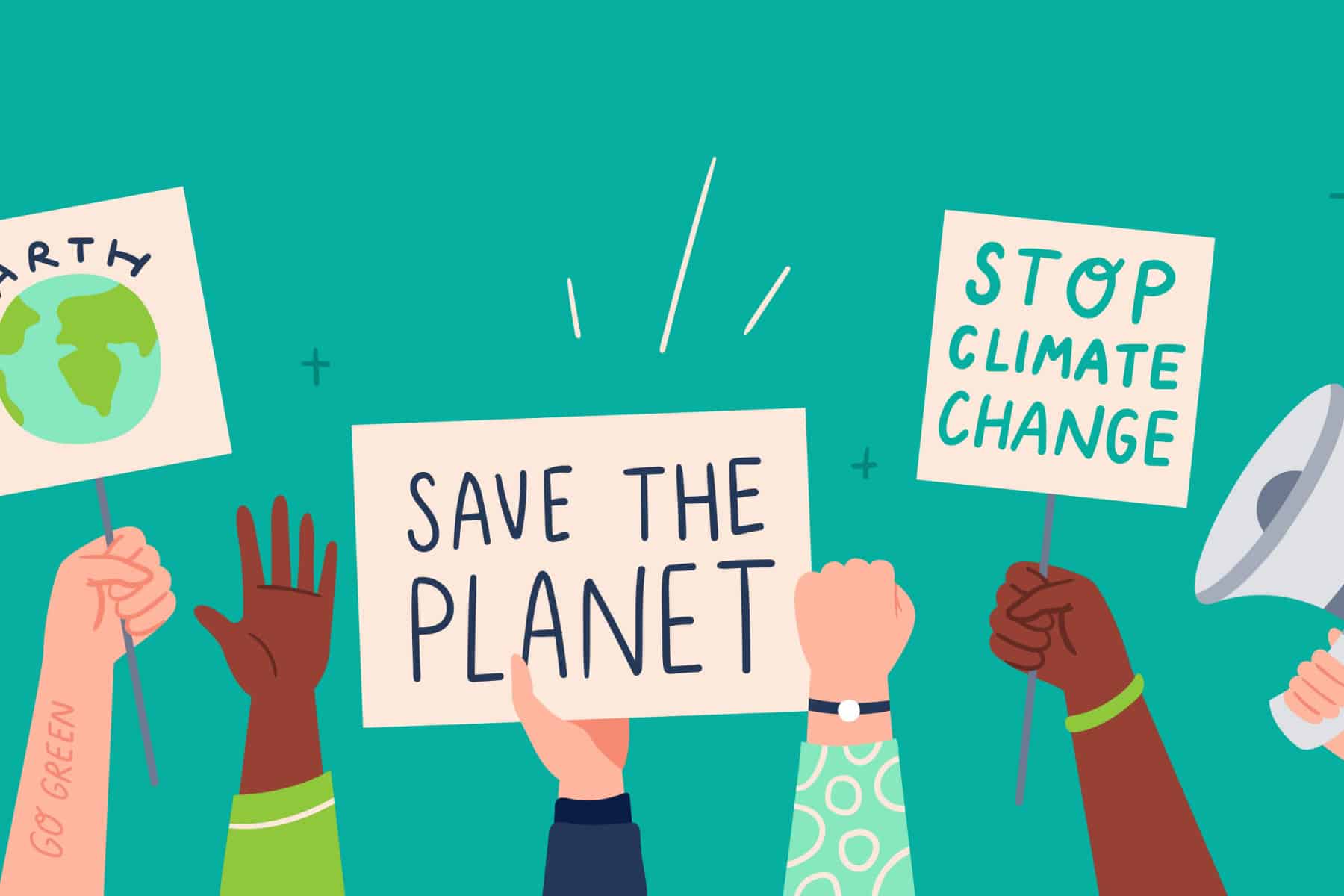
Before Greta Thunberg’s environmental activism, before Al Gore’s inconvenient truth, there was Rachel Carson who gave birth to the modern environmental movement. It was Carson who gave us a deeper understanding of the impact we have on our planet and the impact our planet has on us.
Prior to Silent Spring, it was believed that humankind was the master of its own destiny. We could bend the physical universe to meet our needs. Rachel Carson showed us that there were limits to how far the universe would bend in our favor.
All life is interconnected. Actions have consequences. If we make life unfit for one species then we make it unfit for others as well, including ourselves. Rachel Carson is therefore a worthy addition to More Than Just Parks Environmental Heroes series.
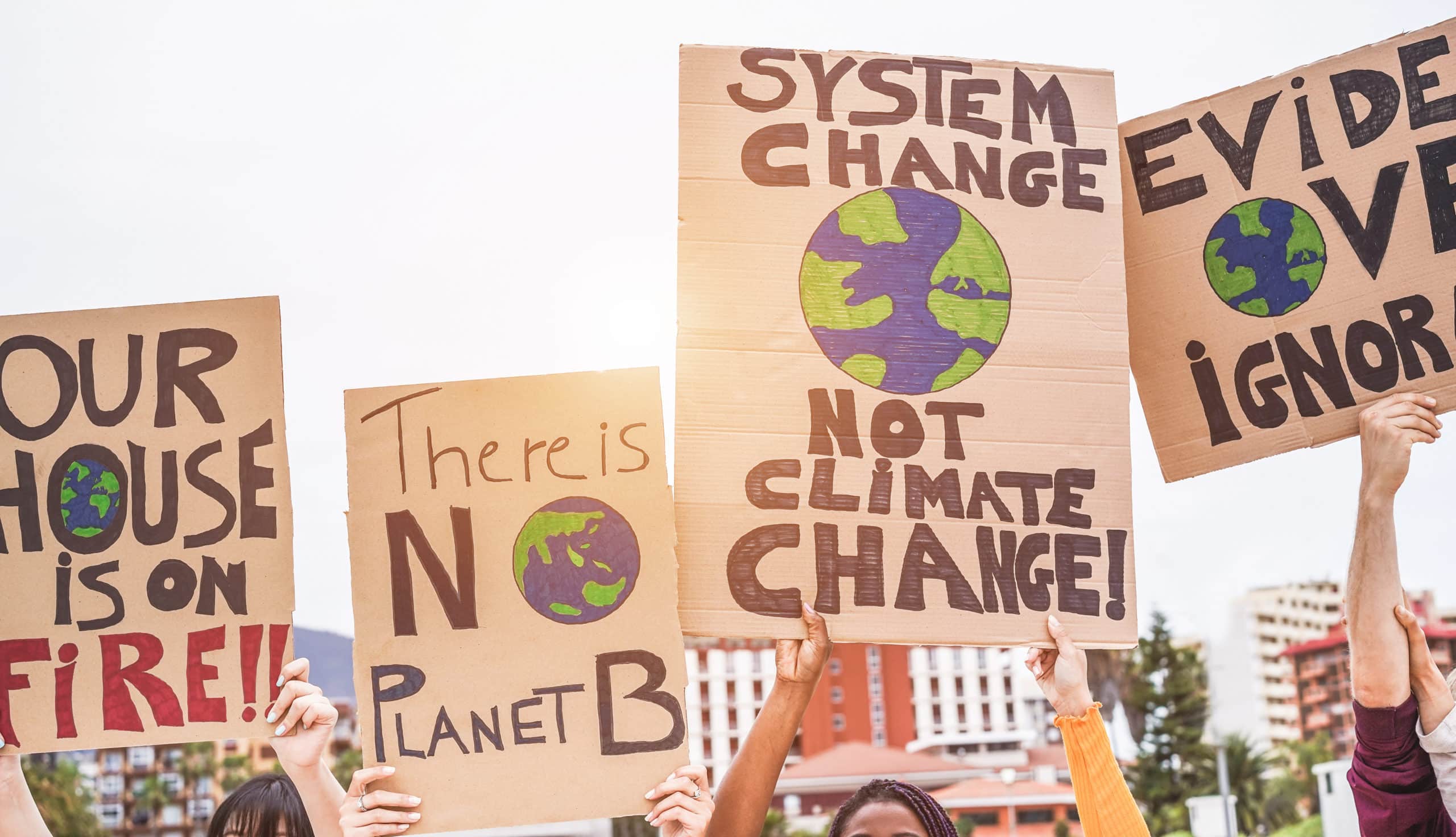
What Lessons Can We Learn From Rachel Carson
The conservation movement arose long before Carson began her all important life’s work. It was built on the idea that we could use the earth’s resources provided we did so wisely. This meant we needed laws to protect our public lands, our wildlife, our waterways and much, much more.
What we failed to consider, however, was how our efforts to manage our physical environment, such as the introduction of chemical pesticides or the burning of co2 gases, would have dangerous consequences. As a result, our planet is now in peril.
What new lessons can be learned from Carson’s now near 60 year old example?
We live in a scientific age, yet we assume that knowledge of science is the prerogative of only a small number of human beings, isolated and priest-like in their laboratories.
-Rachel Carson
This is not true. The materials of science are the materials of life itself. Science is part of the reality of living; it is the what, the how, and the why of everything in our experience.
It is impossible to understand man without understanding his environment and the forces that have molded him physically and mentally.
Rachel Carson and the Birth of the Modern Environmental Movement
A Thinking, Reasoning Mind
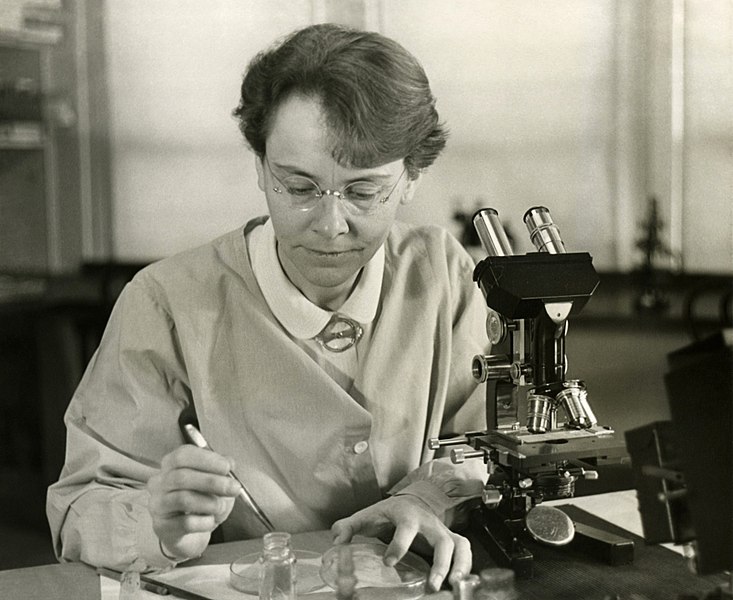
Long before the world of tik tok and tweetstorms, fake news and culture wars, a young high school student wrote a senior thesis that set her on a path to fundamentally change environmentalism.
That thesis, as William Souder writes in his Life and Legacy of Rachel Carson, was a “sober, reproachful consideration of human potential titled, ‘Intellectual Dissipation.'” In it, Rachel Carson argued that a “thinking, reasoning mind,” was our most valuable possession.
Carson then took her thinking, reasoning mind to the Pennsylvania College for Women. She grew up as a lover of books and a lover of nature.
She went to college determined to get her degree in English and spend her life as a writer. Along the way, she completely redefined our understanding of the world around us.
The Sea And Its Mysteries
At college, Carson sought professors who challenged her. In doing so, she found one who changed her profoundly and set her on a new trajectory. Mary Scott Skinker was a professor of Biology at Carson’s college. She became a crucial mentor to Carson.
Skinker was passionate about the study of living organisms great and small. It was her passion that inspired Carson to pursue the study of science. She changed her major from English to Biology.
In her classes, Skinker taught Carson that all life is interconnected. Carson would spend the rest of her life exploring this interconnectedness and what it meant for humankind. But how did this exploration ultimately lead to Silent Spring and modern environmentalism?
Skinker taught that all life was interconnected, and seen in the light of evolution this meant, as Carson came to realize, that every day in the world offered evidence of all the years of the world that had come before.
William Souder from The Life and Legacy of Rachel Carson
Skinker naturally saw extinction as an inevitable aspect of evolution, and she was alert to the fact that human carelessness about the environment could sometimes hasten the disappearance of species that might otherwise not be endangered.
This holistic view of the living world–and our place in it–was already being called “ecology” though the term wasn’t yet in common use.
Upon graduation from college, Skinker helped Carson get a scholarship to Johns Hopkins Univeristy. From there, she went on to become a researcher at the Woods Hole Oceanographic Institute.
It was as part of her studies of marine life that she cultivated a deep and abiding respect for the oceans and their importance.
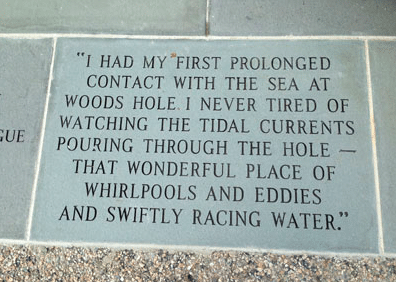
The Great Depression & University
Carson’s graduate studies took place during the Great Depression of the 1930s. She was forced to leave the doctoral program at Johns Hopkins to pursue several part-time academic jobs to help support her family.
With the death of her father in 1935, Robert Carson, Rachel found herself the sole breadwinner for her widowed mother and older brother.
She still managed to pass the civil service examination in parasitology, wildlife biology, and aquatic biology. Carson was eventually hired by the Bureau of Fisheries and began a career in government service.

Becoming A Writer
Rachel Carson originally majored in English because she was a gifted writer. Her true gift, however, would be to take her talents as an author and use them to to unlock the mysteries of science for the rest of us. Where scientists took refuge behind technical descriptions, Carson made use of a compelling literary style to capture the intricate workings of the world around us.
She took heady concepts and presented them in an engaging and understandable manner that average folks could connect with.
Given her ability to make science come to life, she was given the assignment of writing short scripts for a radio program, Romance Under the Waters. It was produced by the Bureau of Fisheries and CBS.

A Rising Tide | The Modern Environmental Movement
Carson, realizing she could earn money as a writer, began a series of articles for periodicals such as the Atlantic Monthly. She described the world beneath the waves to her readers in a vivid manner. It didn’t take long for them to be captivated by her stories.
Her success quickly caught the attention of Hendrik Willem van Loon. His own work, The Story of Mankind, made him an internationally renown author.
It was with his encouragement that Carson would begin work on her first book, Under The Sea-Wind. In it, she took readers on an undersea journey through the eyes of the creatures that inhabit our oceans.
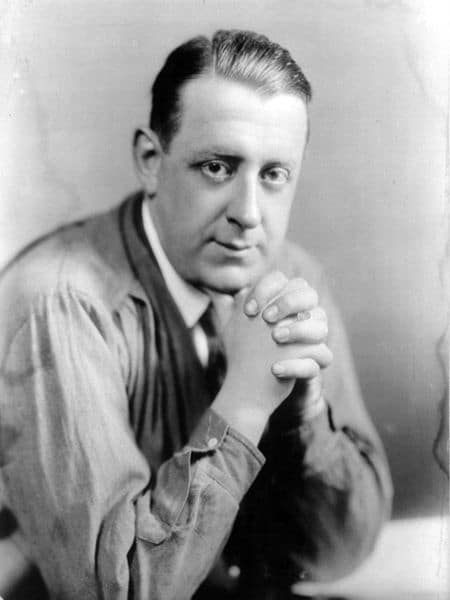
In a letter to Robert Hooke in 1675, Sir Isaac Newton made his most famous statement: “If I have seen further it is by standing on the shoulders of Giants.” Rachel Carson, too, stood on the shoulders of giants.
The Influence of Richard Jeffries
One of those giants was English essayist and nature writer Richard Jefferies. Jefferies valued and cultivated an intensity of feeling in his experience of the world around him.
He had a unique ability to convey his own awareness of nature and the people within it. Jefferies believed the tragedies which plagued humankind were largely the result of its own carelessness and stupidity.
The heart has a yearning for the unknown, a longing to penetrate the deep shadow and the winding glade, where, as it seems, no human foot has been.
-Richard Jefferies
In 1883, Jefferies published what he referred to as his “spiritual autobiography.” Titled, The Story Of My Heart, it became one of the major works of the Transcendentalist Movement.
A core belief of transcendentalism was the inherent goodness of people and nature. Carson kept two copies of Jefferies work by her beside and referred to it often as she sought to bridge the gap between science and the humanities.
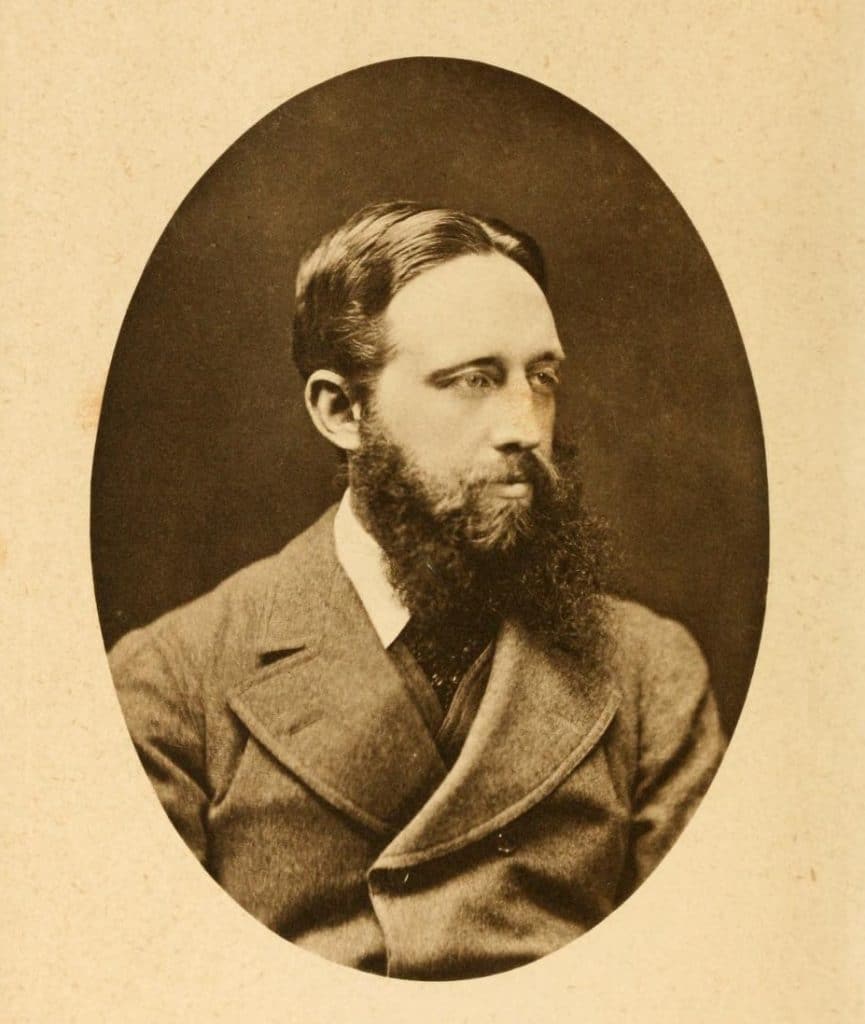
Henry Williamson’s Perspective
Another of Carson’s important influences was Henry Williamson. Williamson had been psychologically scarred by World War One. Serving as a soldier, he witnessed the famous “Winter Truce,” in 1915, between the two warring sides.
During this period, soldiers set aside their hatred for one another and came together to sing Christmas Carols and exchange gifts. During a brief shining moment in an otherwise horrific conflict, humanity shown through the darkness.
After this transformative experience, Williamson could no longer reconcile himself to the bloodshed and the butchery. After the war, he became a writer as a way to find meaning in his own existence.
Not one shot was fired. English and German soldiers intermingled and exchanged souvenirs. Germans very eager to exchange almost anything for our bully beef and jam. Majority of them know French fluently.
– Regimental Sergeant-Major George Beck of the 1st Warwickshire Regiment, recalling the Christmas Truce of 1915
Tarka the Otter
Williamson moved to rural Devonshire and became fascinated with the lives of sea otters. Like Carson, he too was influenced by Richard Jefferies and in 1927, Williamson published his most acclaimed book, Tarka the Otter. Its incredibly moving portrayal of life from the perspective of a sea otter won him international acclaim.
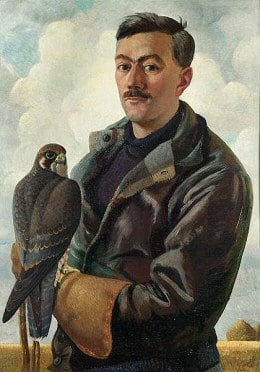
Carson took note of the book’s prose. She, too, would tell stories from the perspective of the creatures who inhabit the sea.
Regeneration can come only through a change of heart in the individual.
-Henry Williamson
The Silent Killer
Dichlorodiphenyltrichloroethane (try saying that one three times fast), more commonly known as DDT, was created in 1874 by Austrian chemist Othmar Zeidler. However, it was not Zeidler whose work would put this chemical to its infamous use. That would take another 60 years.
In the 1930s, Swiss chemist Paul Hermann Müller had the revelation which would have devastating long term consequences. Müller discovered DDT’s potential for use as a pesticide.
During World War Two DDT was put to more widespread use to prevent the spread of insect-born diseases. After the war, companies realized the potential profits that could be made in commercial pesticides and paved the way for them to gain widespread public acceptance.

An Alarming Discovery
In 1945, Carson became aware of the potential hazards of DDT. She acted quickly writing a series of notices warning the operators of fish processing plants that it was toxic to both fish and humans when ingested.
While Carson’s other responsibilities would take precedence over these early warnings, she would nevertheless continue to follow the scientific research on the harmful effects of DDT and other chemical pesticides.
She did not yet have a big enough voice or platform to create a greater awareness. But that would soon come.
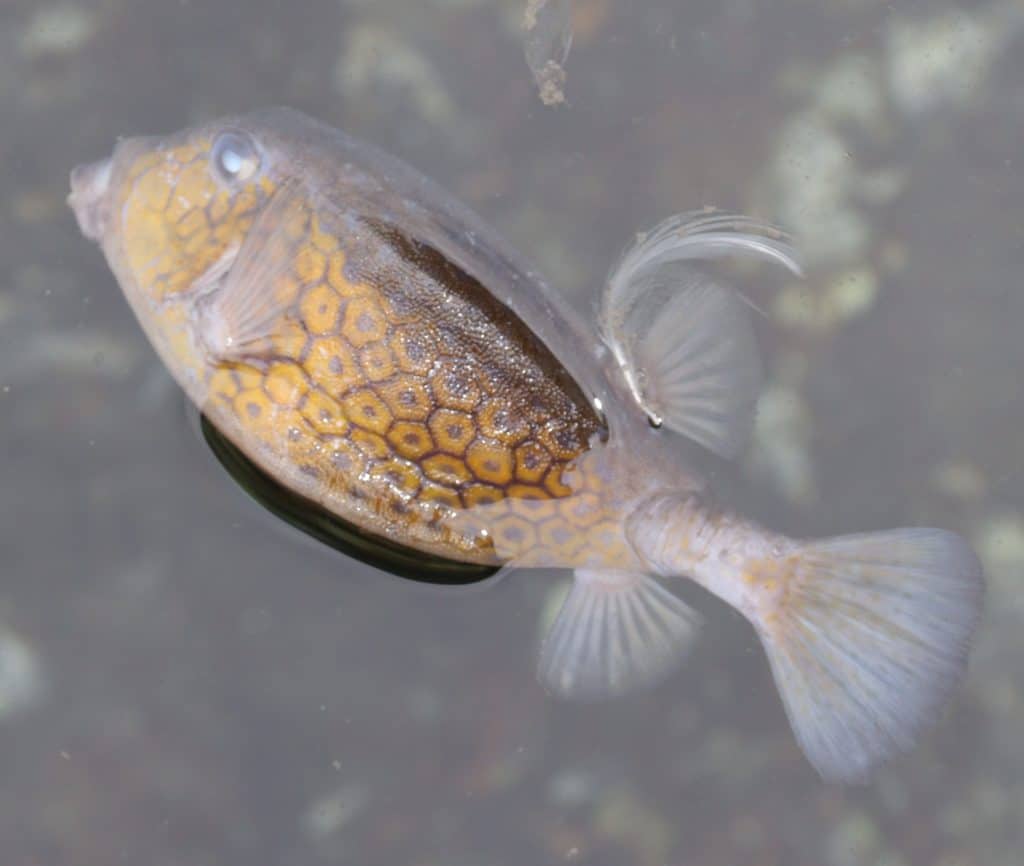
Rachel Carson – Best Selling Author
Carson’s first book, Under The Sea-Wind, was not a best seller. It would be her second book, The Sea Around Us, published in 1951, which became a commercial and critical success.The Sea Around Us made Rachel Carson an internationally acclaimed author.
Although man’s record as a steward of the natural resources of the earth has been a discouraging one, there has long been a certain comfort in the belief that the sea, at least, was inviolate, beyond man’s ability to change and to despoil.
― Rachel Carson, excerpt from The Sea Around Us
But this belief, unfortunately, has proved to be naïve.
International Acclaim
Writing in the New York Herald Tribune, Francesca La Monte, who was associate curator of fishes at the American Museum of Natural History in New York, said that Carson had done what no one before her had managed to do.
La Monte wrote, “The story of the sea with its islands and mountains and depths and of mankind’s attempts to solve its mystery and exploit its treasures has been told before and often, but Rachel Carson has made of it one of the most beautiful books of our time.”
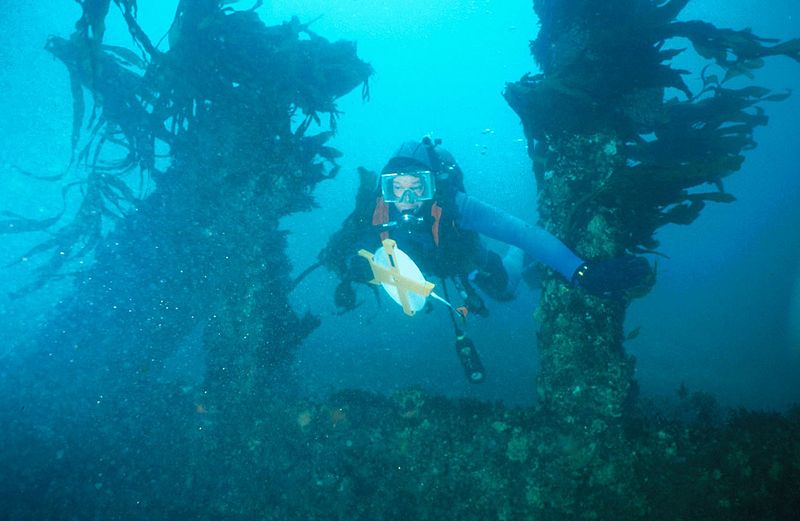
As William Souder writes, “It would be hard to imagine a popular book more densely packed with scientific information than The Sea Around Us. Or one that travels so entertainingly through the facts.”
Given Carson’s literary talent and storytelling abilities, her readers didn’t think of it as science. Rather, they thought of it as a grand adventure and they were excited to go along for the ride.
A New Notoriety | Rachel Carson & the Modern Environmental Movement
After her successful second book, Under The Sea-Wind was re-released. Given Carson’s newfound notoriety, she found herself with not one, but two books on the New York Times bestseller list. With this success, Rachel Carson left her career in government service and devoted the remainder of her life to writing and speaking out on those issues which concerned her.
She would not have to wait long for her next success. Four years after the publication of her first best seller, Carson produced her third.
The Edge of the Sea, Carson’s third book, went on to serve as a field guide into the ecology of the Atlantic seashore. While field guides normally don’t become bestsellers, Rachel Carson was no ordinary writer. Given her huge following, she had an eager audience waiting to devour each of her books.

The edge of the sea is a strange and beautiful place.
Rachel Carson, excerpt from The Edge Of The Sea
All through the long history of Earth it has been an area of unrest where waves have broken heavily against the land, where the tides have pressed forward over the continents, receded, and then returned.
For no two successive days is the shore line precisely the same.
The Edge of the Sea
Carson’s first three books examined humankind’s fascination with the sea and its desire to solve its mysteries. As William Souder writes, “The ocean was always a story to Carson, and she told it like one.” Carson understood her unique power to move her readers.
She reflected on it in a concluding chapter of The Edge of the Sea writing, “For the differences I sense in this particular instant of time that is mine are, but the differences of a moment, determined by our places in the stream of time and in the long rhythms of the sea.”
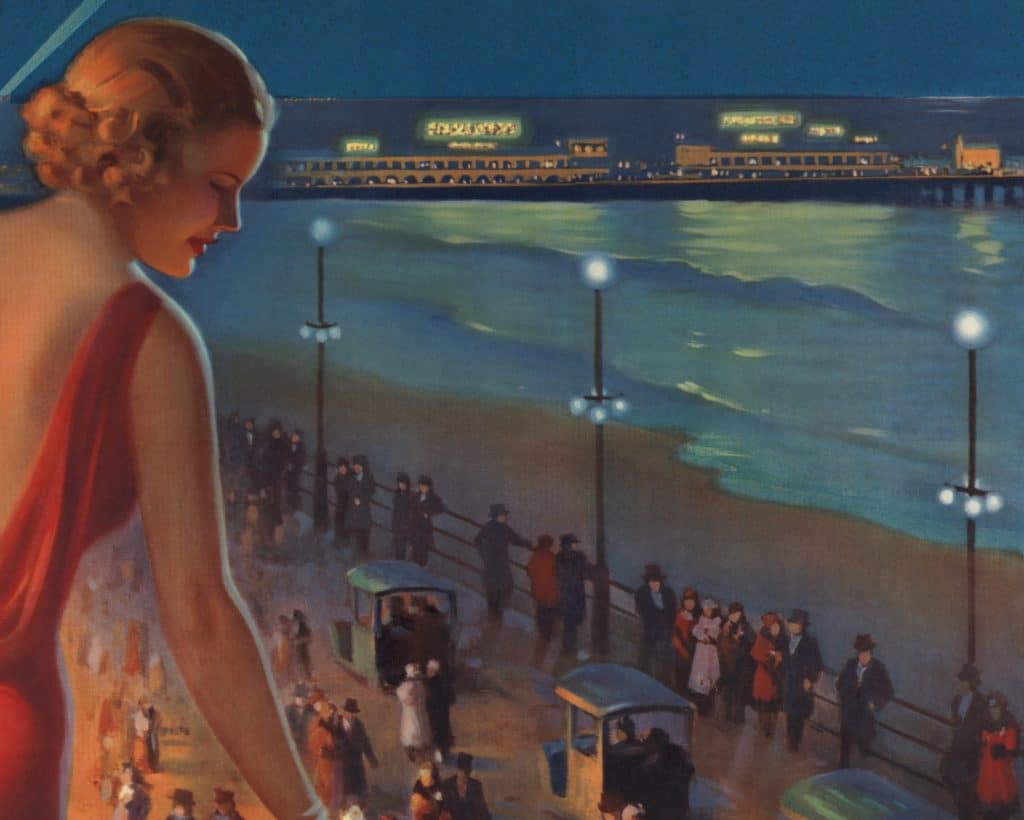
The Control of Nature
In 1958, Rachel Carson began work on her final book. Initially titled, The Control of Nature, this book would finally sound the growing alarm over the threat posed by commercial pesticides. In it, Carson reported that “every human being is now subjected to dangerous chemicals, from the moment of conception until death.”
It would serve as her penultimate warning to humankind and give birth to the modern environmental movement.
The balance of nature is built on a series of relationships between living things, and between living things and their environments.
-Rachel Carson being interviewed by Eric Sevareid, CBS Reports: The Silent Spring Of Rachel Carson
You can’t just step in with some brute force and change one thing without changing many others.
This doesn’t mean we must never interfere, never tilt the balance of nature in our favor. But when we make the attempt we must know what we’re doing. We must know the consequences.
Silent Spring
Carson, by the time she began work on what would become Silent Spring, was increasingly alarmed by a growing body of research on the dangers of chemical pesticides. The theme of her final work was humankind’s reckless disregard for the unintended damage it was causing to its environment.
It was not only chemical pesticides, however, which caught her attention. Carson drew stark parallels to the atmospheric testing of nuclear weapons, which were also causing damage to our environment. She saw these twin threats as intertwined.
Carson spoke to the public’s growing apprehension over the potential hazards of nuclear fallout giving her final book an added sense of urgency.

DDT and nuclear fission were to become the twin agents of a great change of heart and will.
-excerpt from William Souder’s The Life and Legacy of Rachel Carson
In virtual lockstep, the two technologies, deadly and yet beguiling, were perfected in war and then loosed on a world living uneasily at peace.
In the 1950s, their residues–unseen and unbidden–turned up everywhere, a feast of radionuclides and chlorinated hydrocarbons.
A Silent Spring No More
Rachel Carson’s Silent Spring was published in 1962 and proved to be her magnum opus. This final book of hers served as the spark that ignited the modern environmental movement.
Carson’s gifts as a writer coupled with her scientific perspective had finally produced a work which sparked widespread debate over the use of chemical pesticides.
President Kennedy, when asked whether the government needed to take a closer look at this issue in lieu of Carson’s work responded, “Yes, and I know that they already are. I think, particularly, of course, since Miss Carson’s book, but they are examining the issue.”
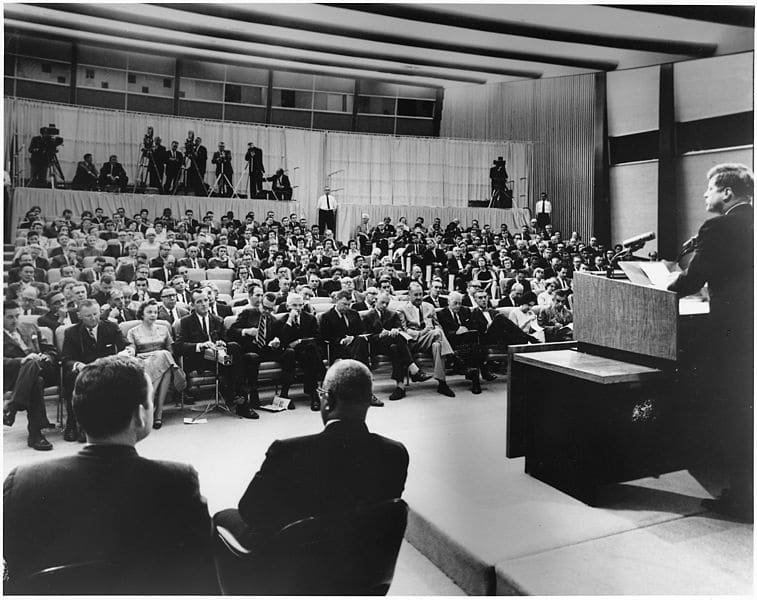
It is a great problem to know how to penetrate the barrier of public indifference and unwillingness to look at unpleasant facts that might have to be dealt with if one recognized their existence.
-Excerpt of a letter from Rachel Carson to Dorothy Freeman
I have no idea whether I shall be able to do so or not, but knowing what I do, I have no choice but to set it down to be read by those who will.
I guess my own principal reliance is in marshaling all the facts and letting them speak for themselves.
The Bipartisan Era Of Environmental Activism | Modern Environmental Movement
Rachel Carson’s Silent Spring gave birth to the modern environmental movement and a bipartisan era of environmental activism spanning five presidential administrations. Beginning with John F. Kennedy’s promise that the government begin to look into the issue of harmful pesticides there would follow a period of landmark legislation.
This legislation included the enactment of:
- The Clean Air Act (1963)
- The Wilderness Act (1964)
- The Clean Water Act (1972)
- The Marine Mammal Protection Act (1972)
- The Endangered Species Act (1973)
- The Safe Water Drinking Act (1974)
- The Comprehensive Environmental Response, Compensation, and Liability Act (a.k.a “Superfund”) (1980).
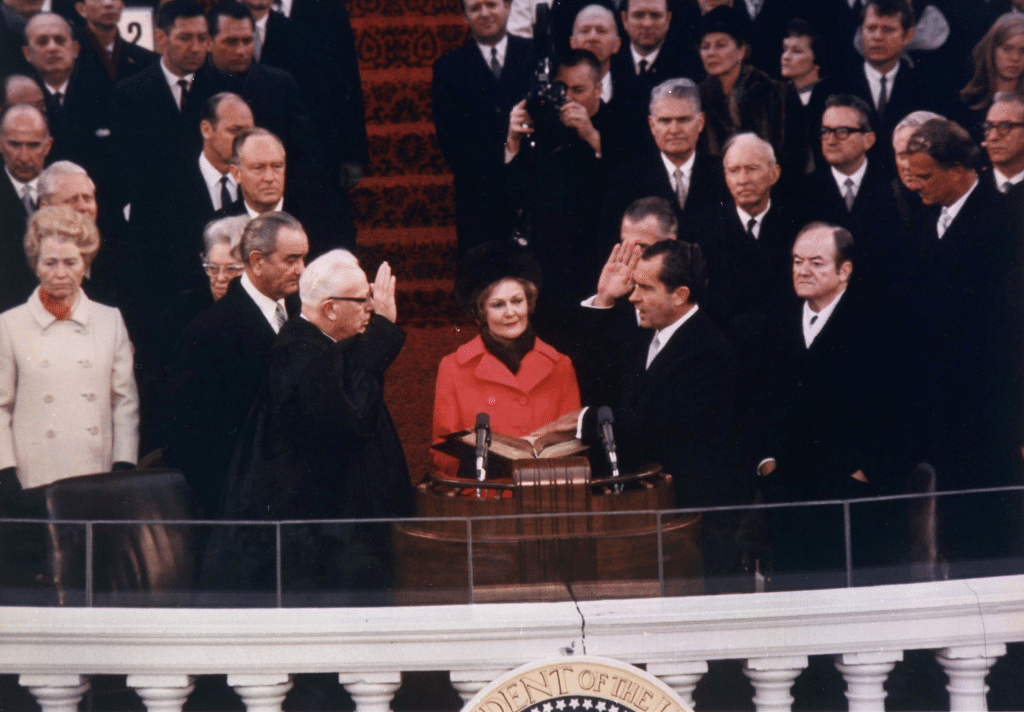
Nixon and the Modern Environmental Movement
President Richard Nixon, a Republican, rode this wave doing a lot of good for the environment along the way. This would included:
- The National Environmental Policy Act of 1969 which required federal agencies to prepare and submit environmental impact statements for most federally funded programs.
- Creation of the Environmental Protection Agency (EPA) in 1970. The EPA would create and enforce regulations to protect people from airborne pollution known to be hazardous to our health.
- Signing into law an extension of the Clean Air Act of 1970.
- Signing into law the Marine Mammal Protection Act of 1972 to protect marine mammals such as dolphins, whales, seals, walruses, manatees, sea otters and polar bears.
- Signing into law the Endangered Species Act on Dec. 28, 1973.
- Proposing the Safe Drinking Water Act of 1974, which was subsequently signed into law by his Republican successor Gerald R. Ford.
(Source: Shea Gunther, Treehugger, October 27, 2019)
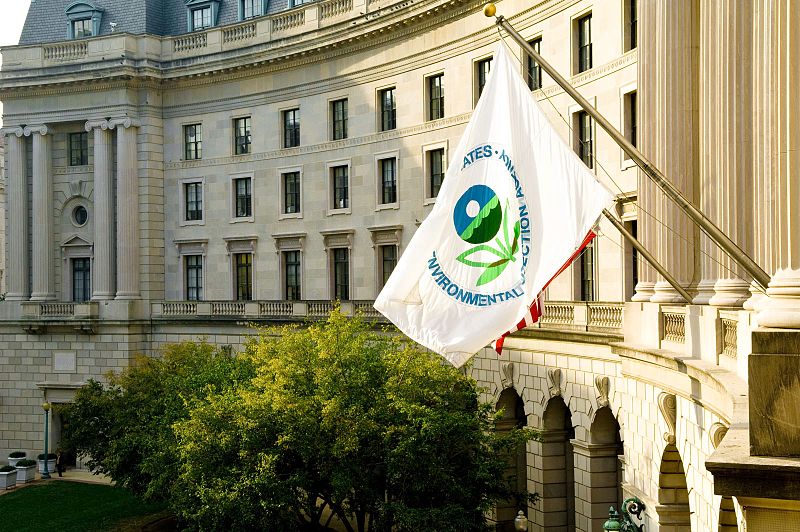
CHECK OUT: Richard Nixon Conservation President
“Clean air, clean water, open spaces – these should once again be the birthright of every American.”
Richard Nixon in his 1970 State of the Union address
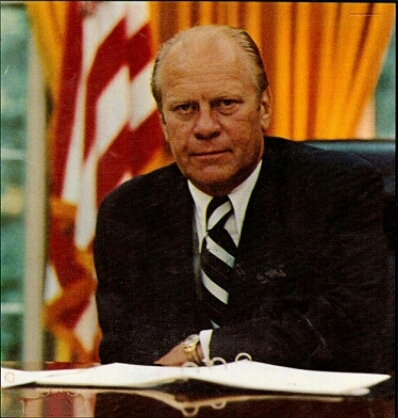
The publication of Silent Spring inaugurated an unprecedented bipartisan era of environmental activism. It began with President Kennedy’s pledge to commit the federal government to playing an active role in protecting the environment.
The progress would reach its zenith under President Jimmy Carter. His historic environmental achievements included:
- addressing an energy crisis
- advocating for renewable energy, protecting public lands (coastal areas, swamps, waterways wetlands and woodlands)
- protecting over 157 millions acres
- the single largest protection of public lands in our nation’s history
- signing into law the Comprehensive Environmental Response, Compensation, and Liability Act (a.k.a. Superfund) in 1980
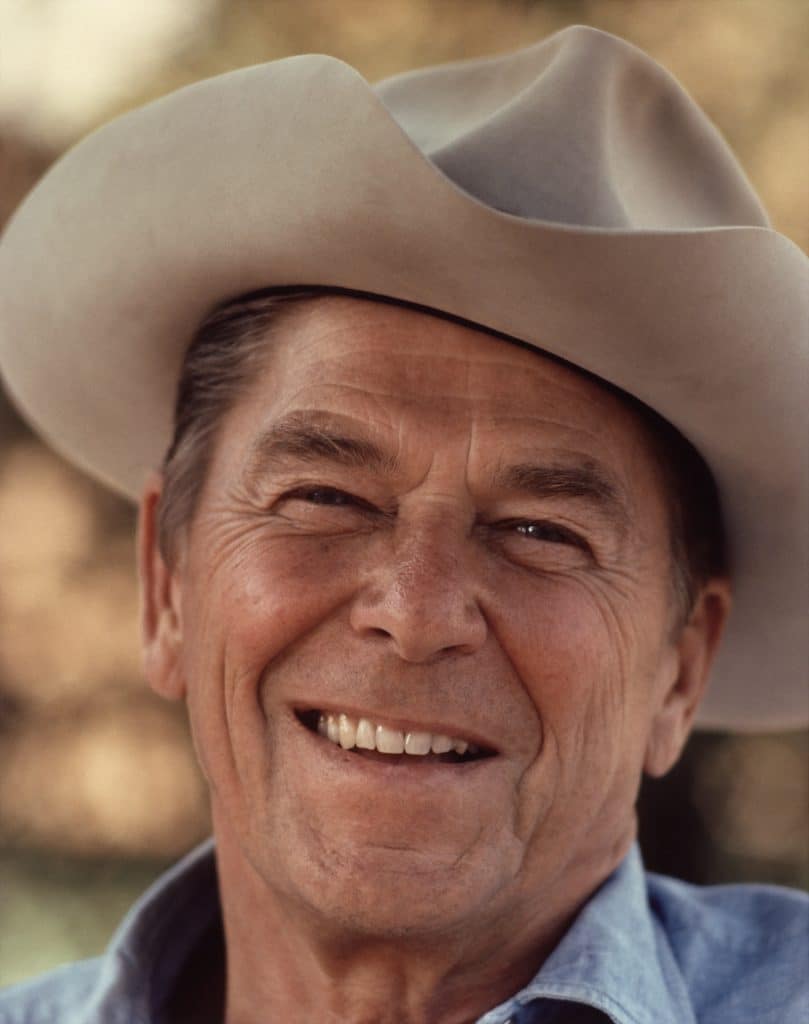
The Untimely Death of the Bipartisan Era of Environmental Activism
With the election of Ronald Reagan in 1980, the bipartisan era of environmental activism came to an end. In one of his earliest public pronouncements on the environment, Reagan claimed that trees caused pollution.
Many environmentalists insist his administration’s environmental record will be remembered as one of the worst of any modern presidency.
A Republican president established the EPA, but a subsequent Republic president, Reagan, perpetually opposed legislation that enhanced the quality of the public’s safety under EPA by favoring businesses and polluting industries that continually threatened the environment with increased carbon emissions and chemical effluents in waterways.
-Don Sharpes, White House Studies, Vol. 14, Issue 1
That conservative strategy did not change over the succeeding decades. This mission of reducing or eliminating government regulations, especially within the EPA, was expanded during the Trump Administration.
Looking back on Reagan’s environmental record The New York Times reported that he was “lax in enforcing antipollution laws and promiscuous in making public lands and resources available to profit-making corporations.
At the same time, his administration would cut off much needed funding for environmental and conservation agencies. These agencies were politicized and their staffs were demoralized.”
Worst of all, Reagan’s actions have served as the “playbook” for future Republican administrations.
The early Reagan administration (1981–1983) launched an overt attack on the EPA, combining deregulation with budget and staff cuts, whereas the George W. Bush administration (2001–2008) adopted a subtler approach, undermining science-based policy.
American Journal Of Public Health, April 2018
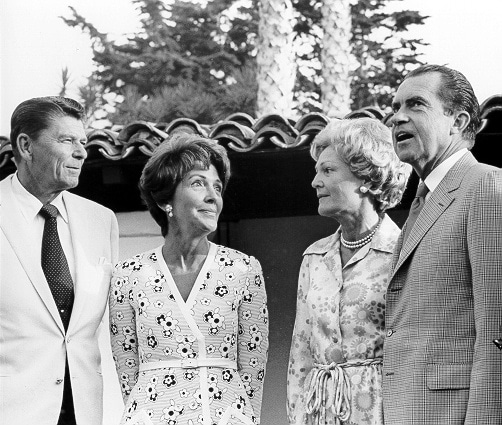
His Administration Would End The Bipartisan Consensus On Environmentalism. (Courtesy of Wikimedia)
George W. Bush’s Impact on the Modern Environmental Movement
George W. Bush, in his 2008 presidential campaign, promised to regulate and reduce carbon emissions. Within weeks of taking office, however, Bush reversed his position.
Like all of his predecessors going back to Ronald Reagan, Bush ignored the looming climate threat while continuing efforts to eliminate safety regulations and opening up more public lands for coal, natural gas and oil interests.
Environmental organizations concluded that the Bush years represented a concerted assault, from the administration’s undermining of the science on climate change to its dismantling of environmental safeguards to its support for mining and oil interests. (Source: The Guardian)
“He [George W. Bush] has undone decades if not a century of progress on the environment,” said Josh Dorner, a spokesman for the Sierra Club, one of America’s largest environmental groups.
-The Sierra Club
Environmental organizations hailed the election of Barack Obama. Their heartfelt hope was that the destructive policies would, at long last, be reversed.
Rather than ushering in a new bipartisan era of environmental activism, however, the Obama respite would prove to be short-lived. The worst was yet to come.
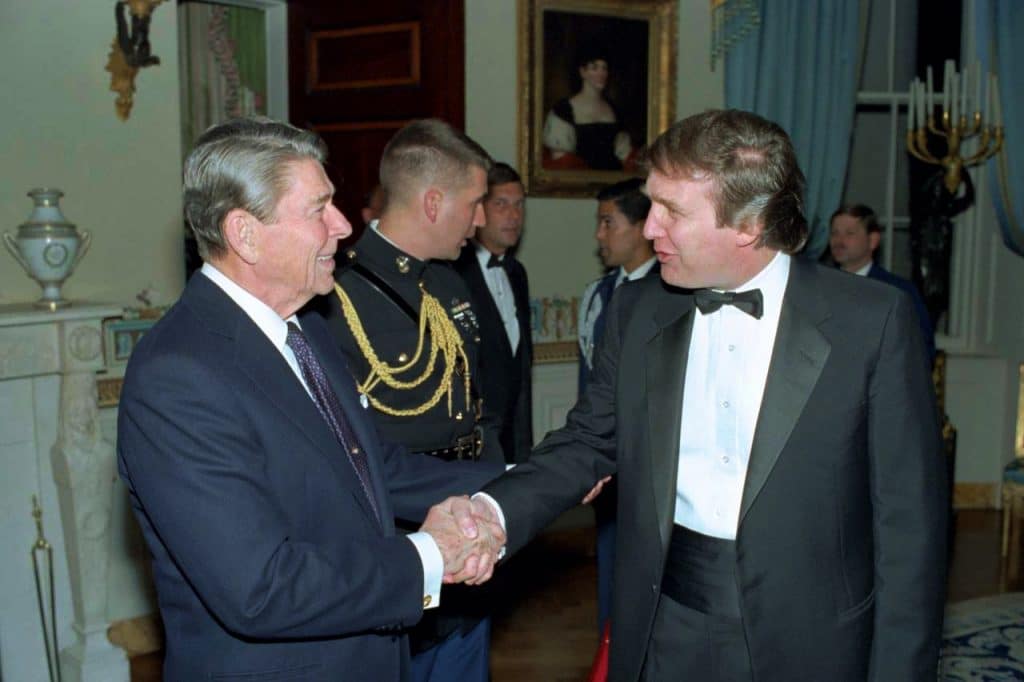
Like the second Bush administration, the Trump administration has tried to control and manipulate the EPA’s use and dissemination of science.
–American Journal Of Public Health, April 2018
It has removed or obscured information about climate change from Web sites, dismissed scientific advisory panels, blocked scientists who receive EPA grants from advisement, and put a political appointee in charge of scientific grants.
From Silent Spring To Scorching Summers
Rachel Carson succumbed to a long and difficult struggle with cancer in 1964. Had she lived another forty years, she might have written a sequel to Silent Spring titled Scorching Summers.
Gus Speth, chairman of President Carter’s Council on Environmental Quality, stated in an interview for the upcoming documentary Carterland:
“As early as the Johnson administration, there were reports to the White House on the emerging threat of climate change and during the Johnson and Nixon years there were repeated statements from the scientific community by government scientists, by the National Science Foundation and others, calling attention to the emerging threat.”

Nathaniel Rich, author of the book Losing Earth, was also interviewed for Carterland. “Nearly everything we understand about global warming was understood in 1979,” stated Rich. In his book, he references the Soviet tradition of ordering scientists to change their studies to conform with the ideology then acceptable to the state.
By 2017, this totalitarian practice had come to America. The Trump Administration went so far as to order the Environmental Protection Agency to remove any mention of the term “climate change” from its website.
By polluting the oceans, not mitigating CO2 emissions and destroying our biodiversity, we are killing our planet. Let us face it, there is no planet B.
-Emmanuel Macron, President of France

A New Hope for Modern Environmentalism
Climate change warnings were ignored after 1980 just as warnings about the dangers of chemical pesticides had been ignored prior to 1962. After his 2008 election, President Barack Obama attempted to reverse course.
He issued a Climate Action Plan to reduce rising carbon emissions. He also committed the United States to participation in the Paris Climate Accords.
Regrettably, both of these important actions were undermined by his Republican successor. In 2018, when asked outside the White House about the scientific findings that unchecked global warming would wreak havoc on the U.S. economy, President Donald Trump replied, “I don’t believe it.”
Donald Trump’s administration unleashed an unprecedented assault on our environment and the health of our communities. His policies threatened our climate, air, water, public lands, wildlife, and oceans; no amount of his greenwashing can change the simple fact:
-Statement issued by Alaska Wilderness League Action, Clean Water Action, Defenders Of Wildlife, Earthjustice, EDF Action, Friends Of The Earth, League Of Conservation Voters, Sierra Club and The Wilderness Society
Donald Trump has been the worst president for our environment in history. Unfortunately, our children will pay the costs of this president’s recklessness.
Our organizations have repeatedly fought back against these attacks and we will continue to fight to ensure that our kids don’t bear the brunt of the Trump administration’s anti-environmental agenda.
The Legacy of Rachel Carson & the Modern Environmental Movement
Rachel Carson endured criticism from those who did not want to believe the scientific truths contained in her book. The vested interests who, for the past forty years, have attacked the science of climate change are eerily reminiscent of those earlier vested interests.
They attacked Carson and her supporters as “flakes and nature lovers who are either Communists or the hapless pawns of Communist influences.”
Carson responded to these critics by engaging in a prediction,“If our species cannot police itself against overpopulation, nuclear weapons and pollution, it may become extinct.” We can now add to that alarming list rising carbon emissions and a warming planet.
The most alarming of all man’s assaults upon the environment is the contamination of the air, earth, rivers, and sea with dangerous and even lethal materials.
-Rachel Carson, Silent Spring
This pollution is for the most part irrecoverable; the chain of evil it initiates not only in the world that must support life, but in living tissues is for the most part irreversible.
Time For Thinking, Reasoning Minds | Modern Environmental Movement
Sixteen years after her death, President Jimmy Carter posthumously awarded Rachel Carson the Presidential Medal of Freedom. In his remarks, Carter described her as follows:
“Never silent herself in the face of destructive trends, Rachel Carson fed a spring of awareness across America and beyond.
A biologist with a gentle, clear voice, she welcomed her audiences to her love of the sea, while with an equally clear determined voice she warned Americans of the dangers human beings themselves pose for their own environment.
Always concerned, always eloquent, she created a tide of environmental consciousness that has not ebbed.”
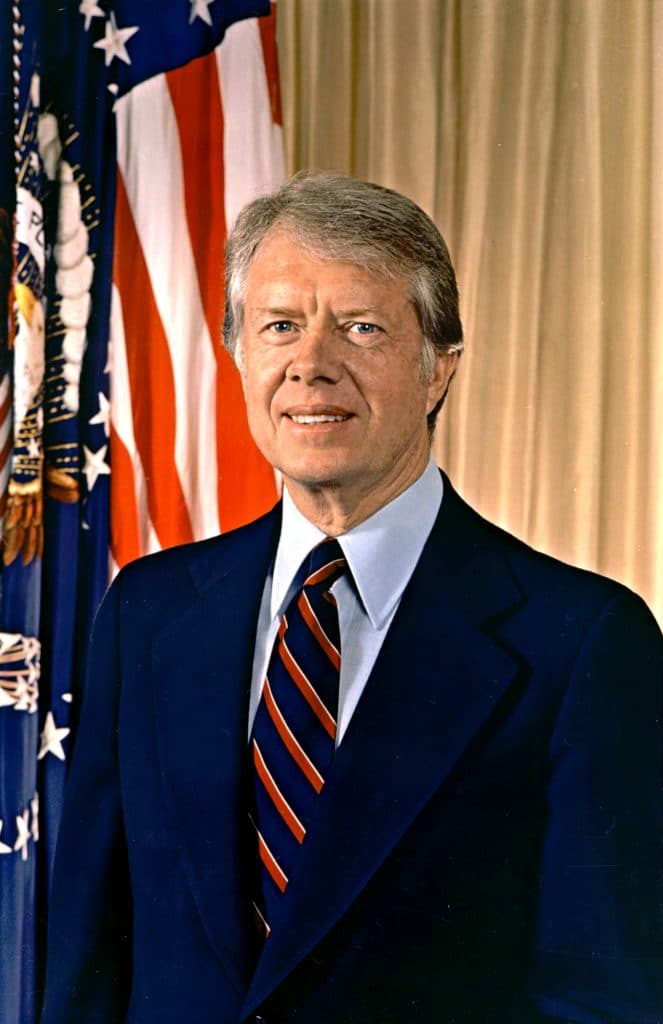
Future generations of conservation leaders must remember that we are stewards of a precious gift, which is not an unpleasant duty, but rather an exciting challenge.
-President Jimmy Carter
We must safeguard our land so that our children and grandchildren can enjoy freshwater, clean air, scenic mountains and coasts, fertile agricultural lands, and healthy, safe places to live and thrive.
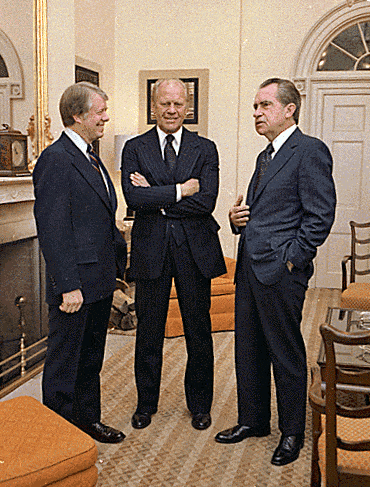
Unfortunately, He Would Be The Last Twentieth Century President To Do So. (Courtesy Of Wikimedia)
The Global Pandemic and The Modern Environmental Movement
Even a global pandemic, which forced major industries to grind to a halt, failed to put a brake on climate change according to a report compiled by the World Meteorological Organization.
It is time for all of us to heed the wise words of Rachel Carson who understood the fundamental interconnectedness of all species and the fallacy that one species could impose its will on the rest without consequences.
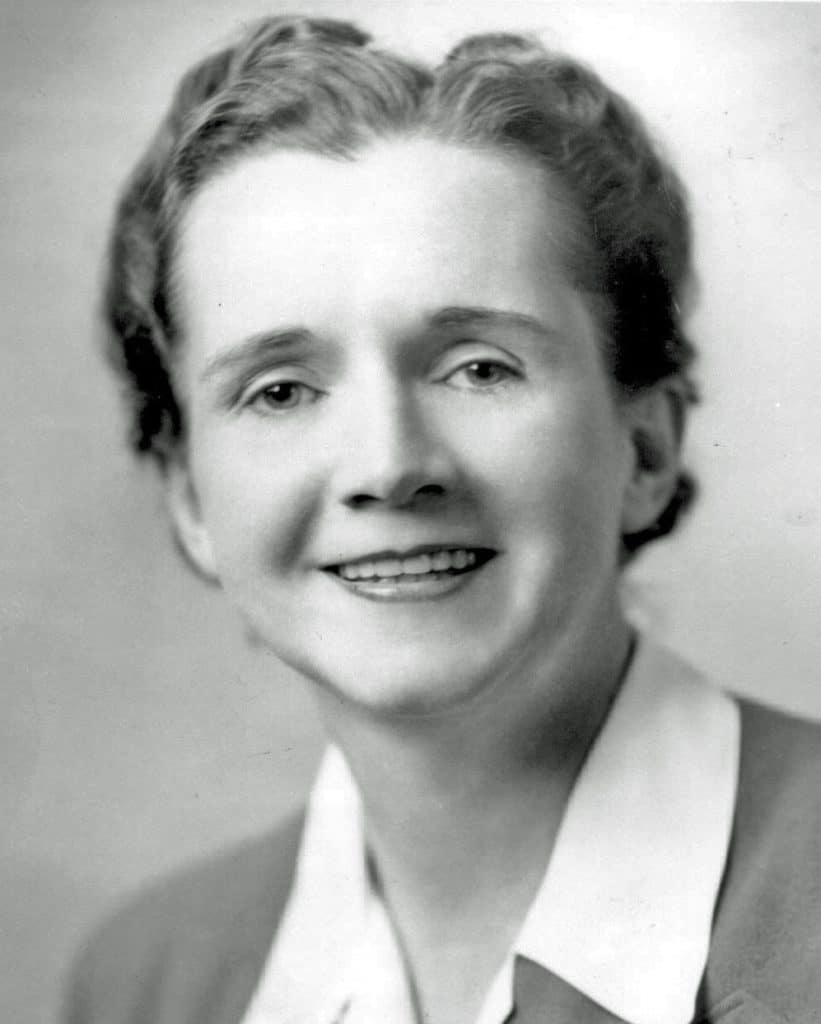
In Summary
Rachel Carson once said, “The materials of science are the materials of life itself. Science is a part of the reality of living; it is the what, the how, and the why of everything in our experience.”
It is time for us to stop debunking science. It’s up to us to hold this scientific truth to be self evident; namely, that actions have consequences. It’s up to us to reverse those actions or suffer the consequences.
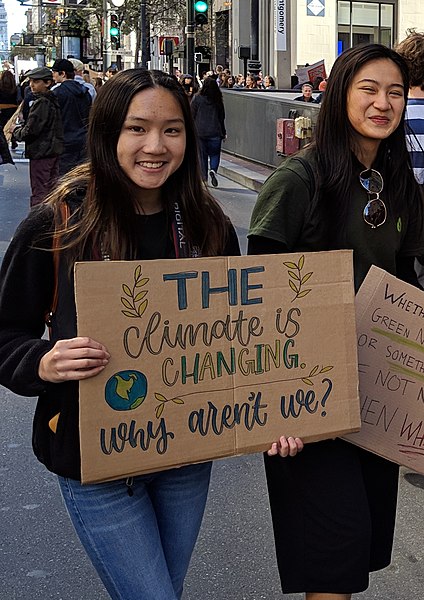
The Latest from More Than Just Parks
- 25 AMAZING Things to Do in Capitol Reef National Park (+ Video)
 As one of Utah’s most beautiful & least visited parks, there are a host of incredible things to do at Capitol Reef National Park.
As one of Utah’s most beautiful & least visited parks, there are a host of incredible things to do at Capitol Reef National Park. - COMPLETE National Parks List 2024 (Printable MAP + By State)
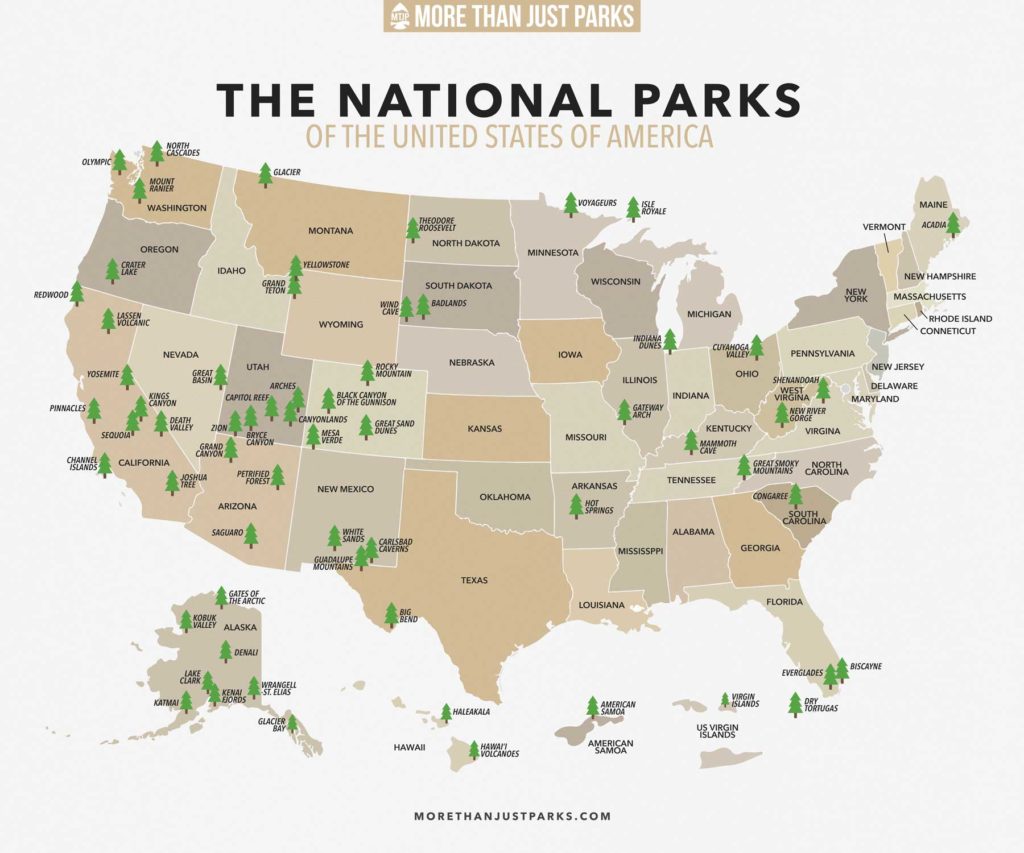 A list of all 63 national parks by state in alphabetical order, a free printable national park map, national parks checklist, & more.
A list of all 63 national parks by state in alphabetical order, a free printable national park map, national parks checklist, & more. - 25 AMAZING Things to Do in Death Valley National Park (+ Photos)
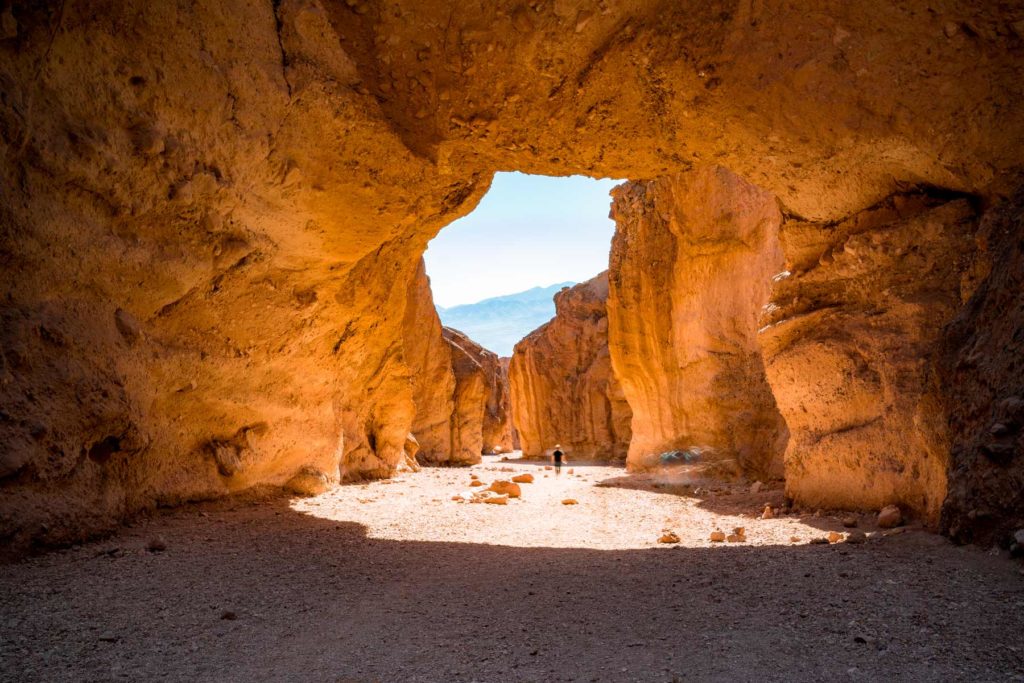 Death Valley is a truly otherworldly place with insane vistas, extreme weather, breathtaking beauty, and all sorts of amazing things to do.
Death Valley is a truly otherworldly place with insane vistas, extreme weather, breathtaking beauty, and all sorts of amazing things to do. - 8 EPIC Kansas National Parks (in Photos + Helpful Tips) 2023
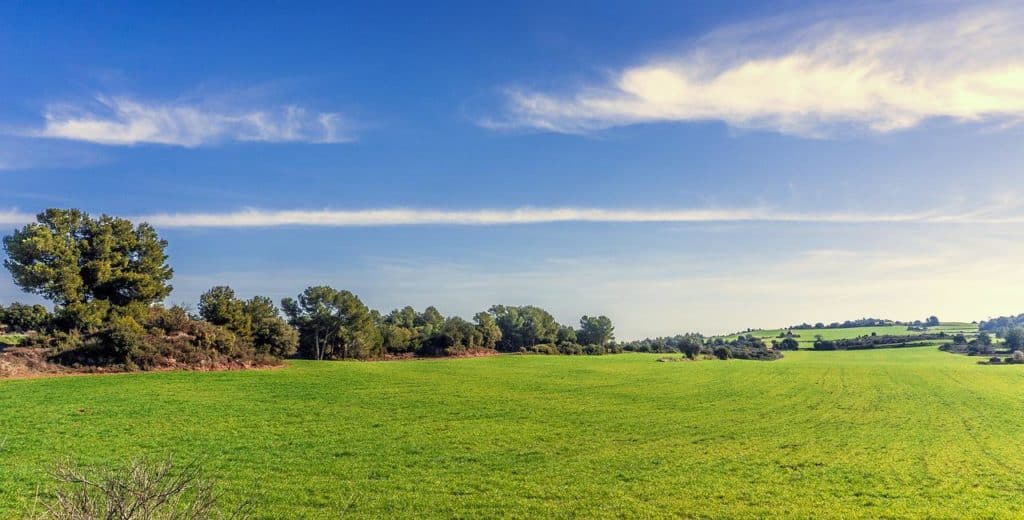 Historic forts, historic explorers, beautiful prairies, the fastest mail service in the Old West, and so much more await you in Kansas!
Historic forts, historic explorers, beautiful prairies, the fastest mail service in the Old West, and so much more await you in Kansas! - 10 AMAZING Facts About Carlsbad Caverns National Park
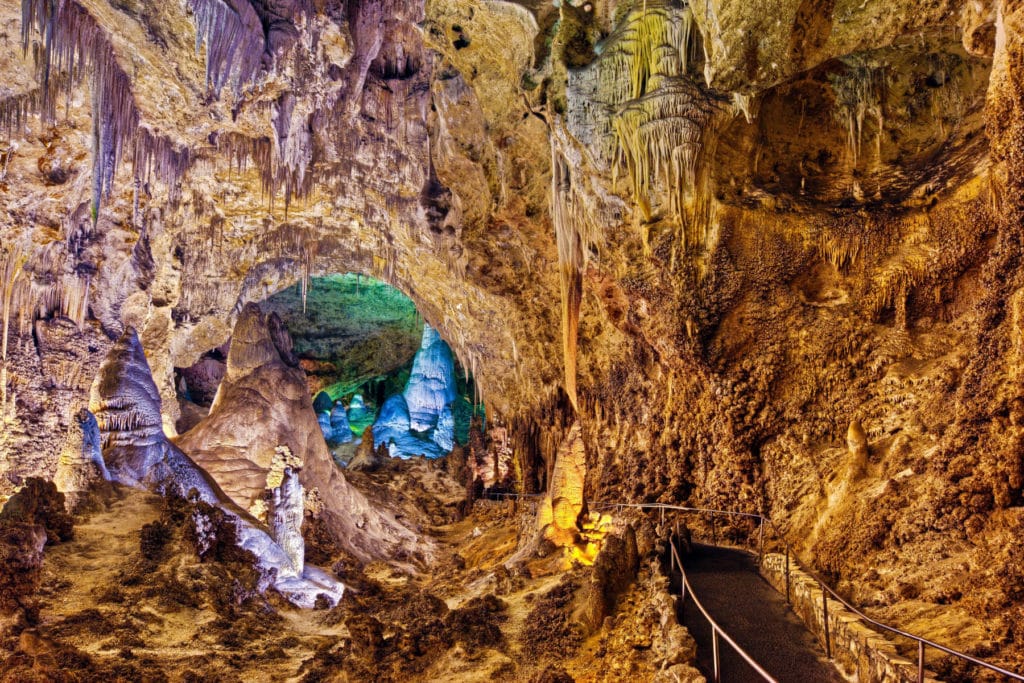 We’ve compiled some fascinating Carlsbad Caverns National Park Facts that will enhance the way you interact with this special place!
We’ve compiled some fascinating Carlsbad Caverns National Park Facts that will enhance the way you interact with this special place!



